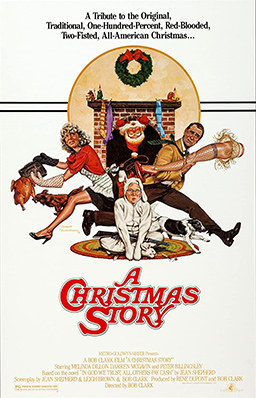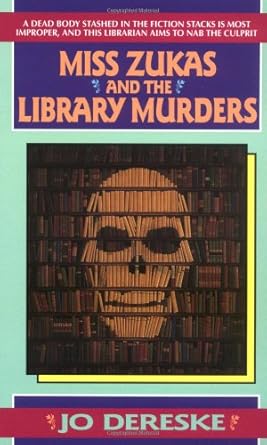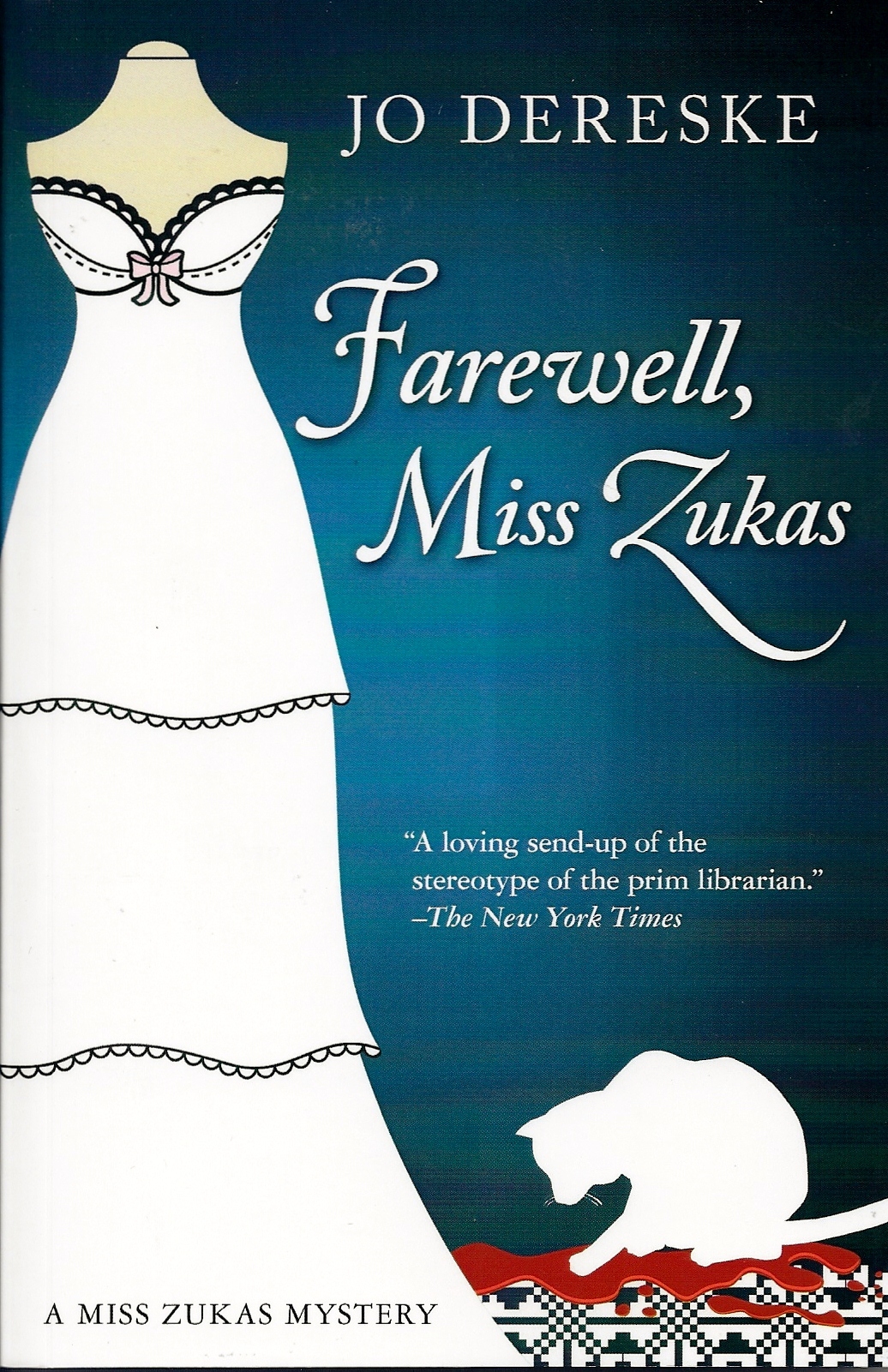I’m splitting my 2025 Year in Review post into two parts. I’ll discuss writing and other things next post; this time I’m concentrating on editing.
23 December 2025
2025 Year in Review: Editing
I’m splitting my 2025 Year in Review post into two parts. I’ll discuss writing and other things next post; this time I’m concentrating on editing.
22 December 2025
The Pretty Good Shepherd
Occasionally one of us SleuthSayers needs a day off and we have to find something to fill the slot. Today was one of those moments. I was looking for something to entertain you with and then I noticed today's date. For reasons that will be clear at the end, it made me remember this piece which I wrote many years ago for Criminal Brief. I hope you enjoy it. - Robert Lopresti
I was a kid, see … Christmas Eve, 1964. In a house in suburban New Jersey ten-year-old me, too excited to sleep, lay in my bed, trying to find something interesting on my AM radio. Suddenly, I hit the jackpot.
A wonderful voice I have never heard before is reading a story about a boy who wants a BB gun for Christmas. Everyone he tells about it — his mother, his teacher — responds the same. As the department store Santa puts it:
“HO HO HO! YOU’LL SHOOT YOUR EYE OUT, KID! HO HO HO! MERRY CHRISTMAS!”It was hilarious. It was like nothing I had ever heard before.
The next night, Christmas, I went frantically down the dial trying to find the voice again. Nothing. Just Howard Cosell Speaking of Sports, and Cousin Brucie playing the Beatles. Where was the magic storyteller?
I found him a few days later. His name was Jean Shepherd and in those days he was on WOR-AM from 10:15 to 11 PM, five nights a week, talking.
Let me emphasize that: talking. This is not what we mean by talk radio today. He didn’t have guests. He didn’t take phone calls. And he didn’t play music, except as occasional background for what he was saying. The man simple talked for forty-five minutes five nights a week. Sometimes on Saturday he added a live show from a club in Greenwich Village. This went on for decades.
The first show I heard was unusual, because he was reading a printed text — his story “Duel In The Snow, Or Red Ryder Nails The Cleveland Street Kid,” which had recently been published in Playboy. More typically he did his show with a few written notes or nothing at all.
He talked about anything and everything but what people loved best were his stories about growing up in Hohman, Indiana (based on Hammond, Indiana and East Chicago, Illinois), and attempting to get an education at Warren G. Harding School. Many people are astonished to discover that Shep really did attend a school named after that bottom-of-the-barrel president. And by the way, the first five words of this column is the way his stories often began. He also told bizarre stories about his days in the Army Signal Corps during World War II (or Korea … the time period for his stories shifted over the years. He lied about his age as he did about so much else.)
Most of you out there never heard Shep on the radio, but some are saying “that story sounds like the movie A Christmas Story.” It should. That film was based on his work (he narrates it and has a cameo). The studio had so little faith in it that it wasn’t in theaters at Christmas, but the thing is a certified classic today. And because of it, Shepherd died a rich man. Radio, the medium which gave him his best canvas, was not so kind to him, financially.
If you dig around on the web you can find recordings of Shepherd, and clips from his TV work — PBS movies, a series called Jean Shepherd’s America, etc. — but since this blog is mostly about writing, let’s talk a little about the words he put down on paper.
They sparkled. Here are a few examples:
It seems like one minute we’re all playing around back of the garage, kicking tin cans, and yelling at girls, and the next instant you find yourself doomed to exist as an office boy in the Mail Room of Life, while another ex-mewling, puking babe sends down Dicta, says “No comment” to the Press, and lives a real genuine Life on the screen of the world. —“The Endless Streetcar Ride Into The Night, And The Tinfoil Noose.”
It was the Depression, and the natives had been idle so long that they no longer even considered themselves out of work. Work had ceased to exist, so how could you be out of it? —“Duel In The Snow …”
(After the Prom we) arrived at the Red Rooster, already crowded with other candidates for adulthood. A giant neon rooster with a blue neon tail that flicked up and down in the rain set the tone for this glamorous establishment. An aura of undefined sin was always connected with the name Red Rooster. Sly winks, nudgings and adolescent cacklings about what purportedly went on at the Rooster made it the “in” spot for such a momentous revel. Its waiters were rumored really to be secret henchmen of the Mafia. But the only thing we knew for sure about the Rooster was that anybody on the far side of seven years old could procure any known drink without question. —“Wanda Hickey’s Night Of Golden Memories.”
Just as MAD Magazine was for many people of my age, Shep was the voice of sanity that got me through early adolescence. The whisper that said: You’re right! The adults ARE crazy! I owe him a lot for that.But I owe him a hell of a lot more. One day when I was in high school a friend told me that his sister Terri and one of her friends wanted to go see Shep perform live in Red Bank, and since the girls didn’t have licenses yet, they were asking him to drive. Would I like to go along?
Sure, I said. And the show was so good I wound up marrying Terri. Today, December 22, is our 49th anniversary.
Thanks, Shep. You changed my life.
21 December 2025
Christmas Musical Fun
by Leigh Lundin
Today’s venture is short and sweet, combining a great rendition of ‘White Christmas’ and clever animation, a bit of holiday magic from 18 years ago.
Merry Christmas to you.
| credits | ||
| music | The Drifters | |
| bass | • Bill Pinkney | |
| tenor | • Clyde McPhatter | |
| animation | Joshua Held | |
| 3D version | Karyne Dufour |
I belatedly discovered a clever 3D update to the original.
Happy holidays, everyone.
20 December 2025
December Stories
by John Floyd
I've had two short stories published this month. I'm not saying that's either important or interesting, except that I needed a topic to write about today, and I happened to realize that in a sense it is sort of interesting, at least to me. Because those two stories were (1) different from each other in almost every way, (2) published in two extremely different kinds of publications, and (3) written the very same week, many months ago.
The first of the stories was "Celebration Day," published on December 6 in Von Stray's Crimestalker Casebook and edited by Andrew McAleer. This magazine is a rebirth of the old Crimestalker Casebook from twenty-plus years ago (also edited by Andrew), and is something I've been looking forward to seeing ever since I first heard about it, last year. I had already published a couple of stories in the former version of the magazine (in 1999 and 2004), and I remember it as a good experience. I also remember enjoying all the other stories that appeared in its pages. Andrew's a great editor, by the way.
"Celebration Day" is short, 1800 words, and is set in the rural South in no particular time period. (That unmentioned date is not as important as you might think; there are many areas in the Deep South--some of my favorite places, actually--that can seem, at first glance, almost unchanged over the past fifty or sixty years.) Summarywise, the story takes place in only one room of one farmhouse, over a period of no more than twenty minutes or so, and involves only two characters: a husband and wife. The situation is simple: hubby has come home unexpectedly in the middle of the day because the boss of the plant where he works didn't show up to unlock the place. Even more strange is that several other workers have gone missing as well. The reason, of course, is the story's mystery, and the center of the plot.
The other story, "Eight in the Corner," was published on December 14 in Issue #224 of Black Cat Weekly, by editor and publisher John Betancourt and associate editor Michael Bracken. This story, my 20th in BCW, was also a finalist for the 2025 Al Blanchard Award, so Michael kindly agreed to have the publisher wait until after that November announcement to run the story in Black Cat Weekly.
At 3300 words, this story is almost twice as long as the other one, it features more scenes and more characters, it's sort of a coming-of-age story, it's set in Boston in the mid-1950s . . . and it was published in a print magazine (BCW is an electronic publication). In fact, its only similarity to the first story is that all the action happens at one place--in this case, an old neighborhood pool hall.
The protagonist of "Eight in the Corner" is a ten-year-old boy named Billy Coleman, who spends most of his after-school and weekend time in the poolroom, watching the grownups's games and listening to them talk and dragging a little wooden stool around to stand on so that he can play too, alone and eager to learn. In this story Billy winds up learning more, though, than how to play pocket billiards. He learns a life lesson, and from an unlikely teacher: a young stranger who arrives at the pool hall to challenge a local expert, who also happens to be a ruthless crime boss with a past that's linked to the stranger's. FYI, the title of this story has a double meaning: the pool hall's name is The Corner Pocket, often shortened to just The Corner, and there's a total of eight people in the place at the time of the final and fateful game.
The fact that these two stories bear almost no resemblance to each other isn't surprising to me, because--as I said--one of them was written right after the other. And if I remember correctly, never in my so-called writing career have I ever written stories back-to-back that were in any way alike. Why? Because I don't think that would be much fun. One of the reasons I like writing short is the freedom to write stories that are far different from each other. That keeps the process interesting, to me. Switching things around--different plot, different kinds of characters, different settings in both time and place, different POVs--keeps me from getting bored with all this. Or at least I guess it does, because I'm not.
A note of explanation: I practice what I suppose is a literary version of chain-smoking. Ever since I began writing for publication in the mid-'90s, I've usually started a new short story as soon as I write END on the previous story. I'm not saying I always start typing it then, but it's in my head and I start thinking about it. And I'm also not saying that's good or bad--that's just the way I do it.
How about you? If you're a writer of short fiction, do you consciously try to vary the kinds of stories you produce, especially the ones that are written back-to-back? Would you instead rather stick to one comfortable type of story for most of your writing? Or does it matter to you? Are you more concerned about what certain markets, themed anthologies, etc., might be wanting at the time? (I can see how that could override other preferences.) On another subject, do you usually write stories one after the other, lighting the new one off the butt of the last, or do you take a break between projects, in order to recharge? If so, how long a break? Do you ever work on more than one story at the same time?
Ah, well. Different strokes. Whichever ways you do it, keep it up.
I always need new stories to read.
19 December 2025
Holiday Tradition: A Very Tom Waits Christmas
by Jim Winter
 |
| Mirimax |
I pulled on Santa’s sleigh
Christmas Eve was dark, and the snow fell like cocaine off some politician’s coffee table
Rudolph looked to the sky. He had a shiny nose, but it was from too much vodka
He said, “Boys, it’s gonna be a rough one this year.”
I pulled on Santa’s sleigh
The elves scrambled to pack up the last of the lumps of coal for deserving suburban brats
And a bottle of Jamie for some forgotten soul whose wife just left him
Santa’s like that. He’s been there.
Oh, he still loves Mrs. Claus, a spent piece of used sleigh trash who
Makes good vodka martinis, knows when to keep her mouth shut
But it’s the loneliness, the loneliness only Santa knows
I pulled on Santa’s sleigh
And the workshop reeks of too much peppermint
The candy canes all have the names of prostitutes
And Santa stands there, breathing in the loneliness
The loneliness that creeps out of the main house
And out through the stables
Sometimes it follows the big guy down the chimneys
Wraps itself around your Tannenbaum and sleeps in your hat
I pulled on Santa’s sleigh
We all line up for the annual ride
I’m behind Vixen, who’s showin’ her age these days
She has a certain tiredness that comes with being the only girl on the team
Ah, there’s nothing wrong with her a hundred dollars wouldn’t fix
She’s got a teardrop tattooed under her eye now, one for every year Dancer’s away
I pulled on Santa’s sleigh and
I asked myself, “That elf. What’s he building in there?”
He has no elf friends, no elf children
What’s he building in there?
He doesn’t make toys like the other elves
I heard he used to work for Halliburton,
And he’s got an ex-wife in someplace called Santa Claus, Indiana
But what’s he building in there?
We got a right to know.
I pulled on Santa’s sleigh
And we’re off
Off into the night
Watching the world burn below
All chimney red and Halloween orange
I’ve seen it all
I’ve seen it all
Every Christmas Eve, I’ve seen it all
There’s nothing sadder than landing on a roof in a town with no cheer.
18 December 2025
Antiochus IV Epiphanes: Why We “Draw the Line” (CA. 215–164 B.C.)
After reading [the senate decree] through [Antiochus] said he would call his friends into council and consider what he ought to do. Popilius, stern and imperious as ever, drew a circle round the king with the stick he was carrying and said, ‘Before you step out of that circle give me a reply to lay before the senate.’ For a few moments [Antiochus] hesitated, astounded at such a peremptory order, and at last replied, ‘I will do what the senate thinks right.’ Not till then did Popilius extend his hand to the king as to a friend and ally.
—Titus Livius (Livy), Ab Urbe Condita (The History of Rome)
Gotta love this guy: a propagandist of the first order, his years in Rome had impressed upon him the futility of fighting that resourceful people and of the importance of staying on their good side. A usurper (no surprise, considering how many Hellenistic monarchs were), he stole the throne from a nephew he later murdered after first marrying the boy’s mother. Antiochus was remembered by the ancient Hebrews as the evil king whose coming was predicted by their prophet Daniel.It took Antiochus a few years to get around to murdering his nephew. After consolidating his power base, Antiochus next went to war with the much weaker neighboring kingdom of Egypt, all but conquering it before being confronted by the Roman ambassador, Popilius, who demanded that Antiochus withdraw from Egypt or face war with the Roman Republic. This is the source of the adage of “drawing a line in the sand” (as laid out in the quotation that opens this chapter). Antiochus did not step over the line, but retreated from Egypt.
 |
| A Renaissance look at the “line in the sand.” |
By this time broke and really pissed off, Antiochus decided to loot the city of Jerusalem and its venerable temple on his way home to Syria. In his eyes, it was merely a way of catching the Hebrews up on their back taxes. The Hebrews didn’t see it that way, and when rioting ensued, Antiochus made the serious mistake of trying to suppress the Jewish religion.
 |
| Sept Maccabées, by Audierne Saint-Germain |
The reasonably foreseeable result was the famous Maccabean uprising. You may have heard of a traditional celebration called Hanukkah? Commemorates the rededication of the temple after Judah Maccabee kicked the Seleucid king’s butt? This is that. Later Seleucid kings agreed to allow the Hebrews their religious freedom and limited political autonomy. By that time, Antiochus had kicked off himself, dying suddenly while fighting rebels in Iran.
And on that note, Happy Hanukkah, and see you in two weeks!
17 December 2025
Farewell, Ms. Dereske
My friend Jo Dereske died this year. Like me, she was an academic librarian who lived most of her life in Bellingham, Washington. She was also a very talented author of mystery novels.
Her most popular books were mystery novels starring Wilhelmina Zukas, who worked in the public library in Bellehaven, Washington. (Part of the joke here is that one well-loved neighborhood of Bellingham is named Fairhaven.) Jo said that she created a fictional version of our city so that she could move a ferry and eliminate a mall.
It is strange to have such a close relationship between fictional and real places. Several people told Jo that they used to live in the same apartment building as Miss Zukas, but that building didn't actually exist.
So what is Helma Zukas like? Smart, introverted, private, small, neat...the word repressed comes to mind. Elevators terrify her. She reluctantly adopts a cat as aloof as herself and since she refuses to name him the vet calls him Boy Cat Zukas.
Clearly Dereske was playing with the stereotype of the librarian. But most people in the field loved Miss Zukas.
Because Helma is far too complex and interesting to be a mere stereotype. Quiet and introverted, yes. But meek? Never. In almost every book she stuns quarrelers into silence with her “silver dime voice.” In one novel she destroys library records so that the police can’t violate the privacy of a book borrower - in spite of the fact that the police chief, the wonderfully named Wayne Gallant, is her will-they-or-won't-they love interest.
So Helma is a force to be reckoned with. Now, consider her best friend since fifth grade, Ruth Winthrop. Ruth is an artist. She is tall (and wears heels to emphasize it). She is also loud, brassy, dresses in wild colors and is as easy with men as Helma is not. Although these two opposites would gladly take a bullet for each other, they can't stand to be in the same room for more than an hour. Dereske has received many emails from women asking "How do you know about me and my best friend?"
By the way, Jo used to get complaints from readers: "Why did you make Miss Zukas so ugly?" Well, she was short and had a stubborn lock of hair that fell on her forehead. Those are the only physical characteristics that are ever mentioned. Anything else is just in their imaginations.
Clearly author had great ability to connect to her audience. At a conference once she read from Miss Zukas in Death's Shadow a passage in which our heroine refuses to pay what she considers an unjust traffic ticket and is forced to do community service at a homeless shelter. This included creating a database of the shelters' donors.
Alphabetization resembled assembly-line work, or walking, or what Helma had heard meditation was supposed to be like: mindless, comfortable, nearly a fugue state. She was unaware of anyone coming or going and worked in a state of silence, only noting occasionally a bead of sweat trickling between her breasts… Her hands flew, paper rustled. To those who lived by the alphabet, there was something as soothing as a lullaby in the dependability of its order.
When Jo read this I heard embarrassed giggles around me from people who recognized the sensation.
The first eleven books were published by Avon, which then chose not to renew the contract. Jo had no complaints; she understood that sales and the economy forced the decision, and she was willing to call the series over.
But her readers insisted the saga needed an ending. So Jo self-published Farewell, Miss Zukas, which ties up most of the loose strings of the story and brings our heroine to a happy ending.
And speaking of happy endings, I will finish with a favorite passage from Miss Zukas And The Island Murders:
On [Miss Zukas'] desk blotter lay a week-old newspaper article listing ten books a local group, calling themselves Save Your Kids, demanded be withdrawn from the library collection. Two of the books, including Madonna's SEX, weren't even owned by the library, although twenty-three patrons had requested them since the article appeared…
Eve pointed to the Save Your Kids article on Helma's desk and stuck out her lower lip. "Why ban Little Red Riding Hood? What did SHE ever do?"
"I believe it was the wolf who did it," Helma said. "But don't worry, she's safe. Fortunately, the Constitution's still in effect."
Farewell, Jo.


.jpg)











